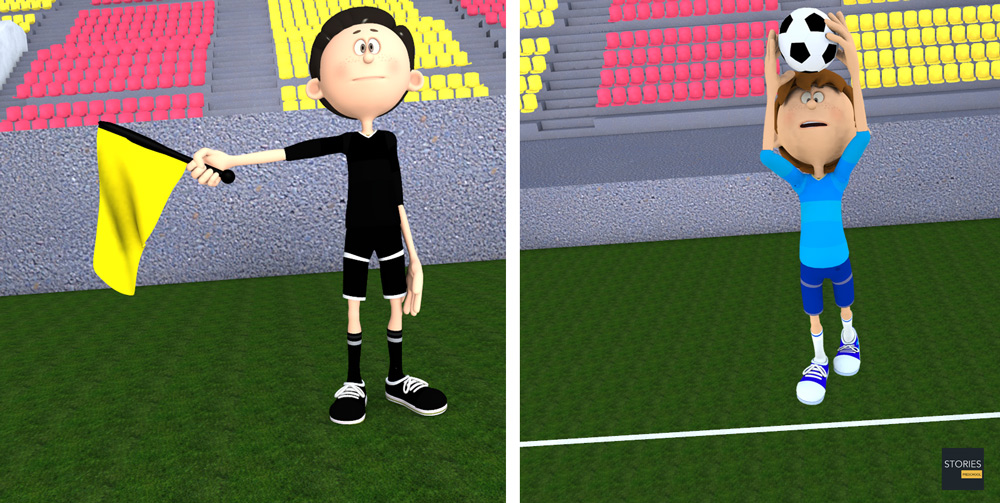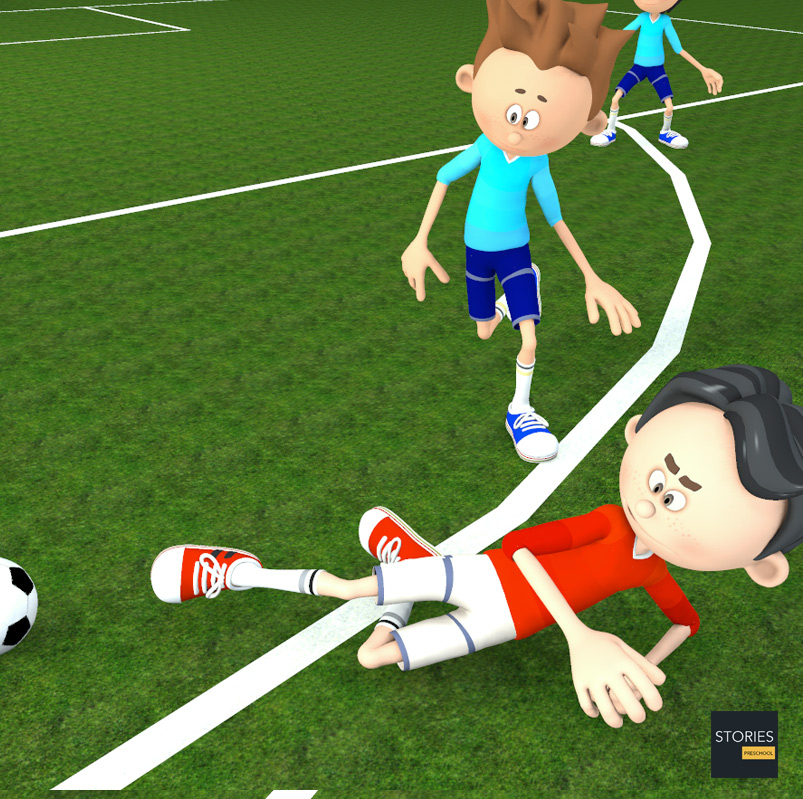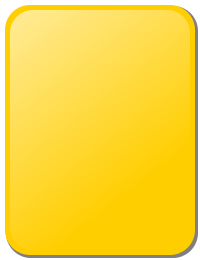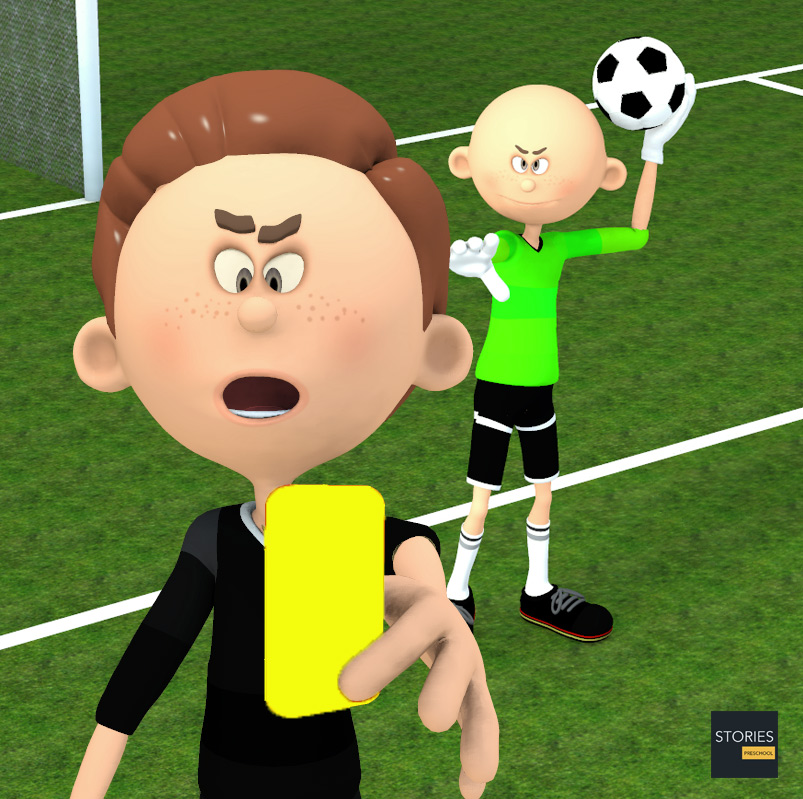Soccer

Soccer Throw-in
A throw-in is a method of restarting play in a game of association football (or soccer) when the ball has exited the side of the field of play.

Procedure
The throw-in is taken from the point where the ball crossed the touch-line, either on the ground or in the air, though typically a referee will tolerate small discrepancies between the position where the ball crossed the touch-line and the position of the throw-in. The throw-in is taken by the opponents of the player who last touched the ball when it crossed the touch-line. Opposing players may stand at any distance from the thrower but no closer than 2 m (2.2 yd), so long as they are still on the pitch. A player may take a throw-in at a distance further back from the touch-line.
At the moment of delivering the ball, the thrower must face the field of play. He or she should have part of each foot either on the touch line or on the ground outside the touch line, and use both hands to deliver the ball from behind and over the head.

The ball becomes in play as soon as it enters the field of play and leaves the hands of the thrower.
A goal cannot be scored directly from a throw-in; if a player throws the ball directly into their own goal without any other player touching it, the result is a corner kick to the opposing side. Likewise an offensive goal cannot be scored directly from a throw in; the result in this case is a goal kick for the defending team.
A player may not be penalized for an offside offense when receiving the ball directly from a throw-in. Skillful attackers can sometimes take advantage of this rule by getting behind the last defender(s) to receive the throw-in and having a clear path to goal.
The optimal release angle for attaining maximum distance is about 30 degrees, according to researchers at Brunel University. The optimal angle would be 45 degrees if the release velocity did not depend on the angle of throw and if there was not air drag. However, according to the study, players are able to throw the ball with greater release velocity for lower angles. Also the optimal angle for fixed release velocity is lower than 45 degrees because of air drag.
Infringements
If an opposing player fails to respect the required distance (2 m) before the ball is in play or otherwise unfairly distracts or impedes the thrower, he or she may receive a caution (yellow card) for unsporting behavior.

If the thrower fails to deliver the ball per the required procedure, or delivers it from a point other than where the ball left the field of play, the throw-in is awarded to the opposing team. This is commonly known as a "foul throw", though such throws are not considered fouls.
It is an infringement for the thrower to touch the ball a second time until it has been touched by another player; this is punishable by an indirect free kick to the opposing team from where the offense occurred, unless the second touch was also a more serious handling offense, in which case it is punishable by a direct free kick or penalty kick.
It is legal to throw the ball into the goal with no contact; however, a goal will not be scored directly from a throw in, nor can an own-goal, without being touched by a player. The restarts are a goal kick for the defending team and a corner kick for the attacking team, respectively. If any player (legally) touches the ball before it goes into the goal, then a goal is scored.
A goalkeeper cannot handle a ball thrown directly to him or her by a teammate. This cannot be circumvented by the keeper using the feet first before handling the ball. If this infringement occurs within the goalkeeper's penalty area, an indirect free kick is awarded. If the infringement occurs outside the goalkeeper's penalty area, a direct free kick is awarded.

SPORTS

RESOURCES
This article uses material from the Wikipedia articles "Association football" and "Throw-in", which is released under the Creative Commons Attribution-Share-Alike License 3.0.
© Stories Preschool. All Rights Reserved.












